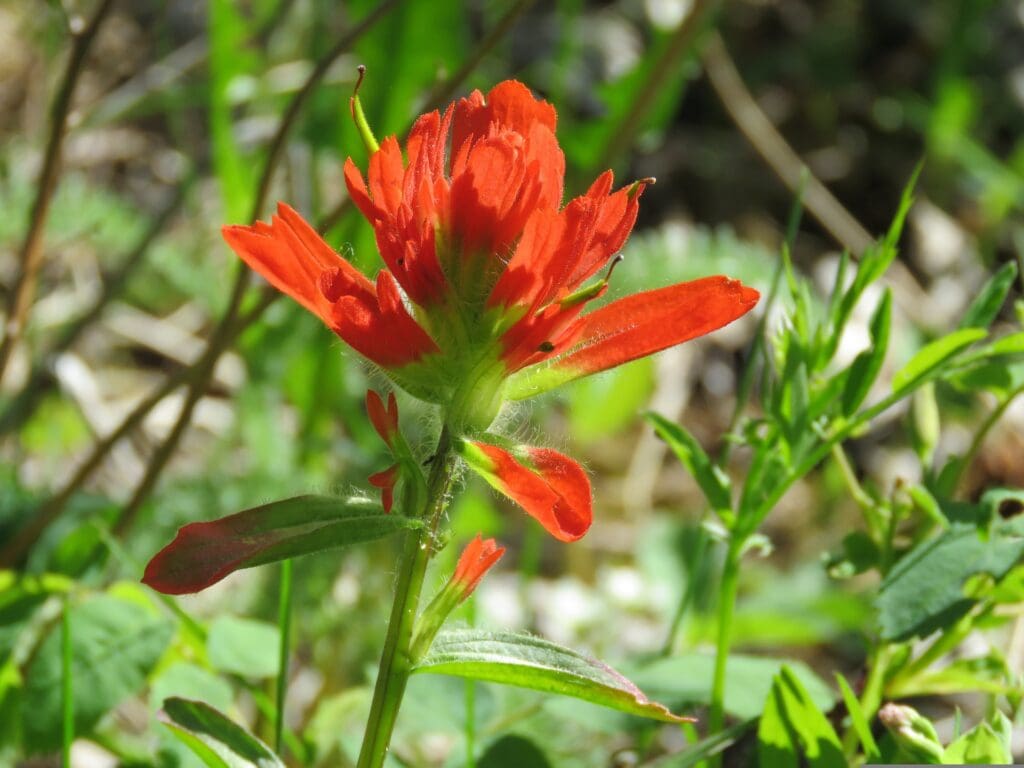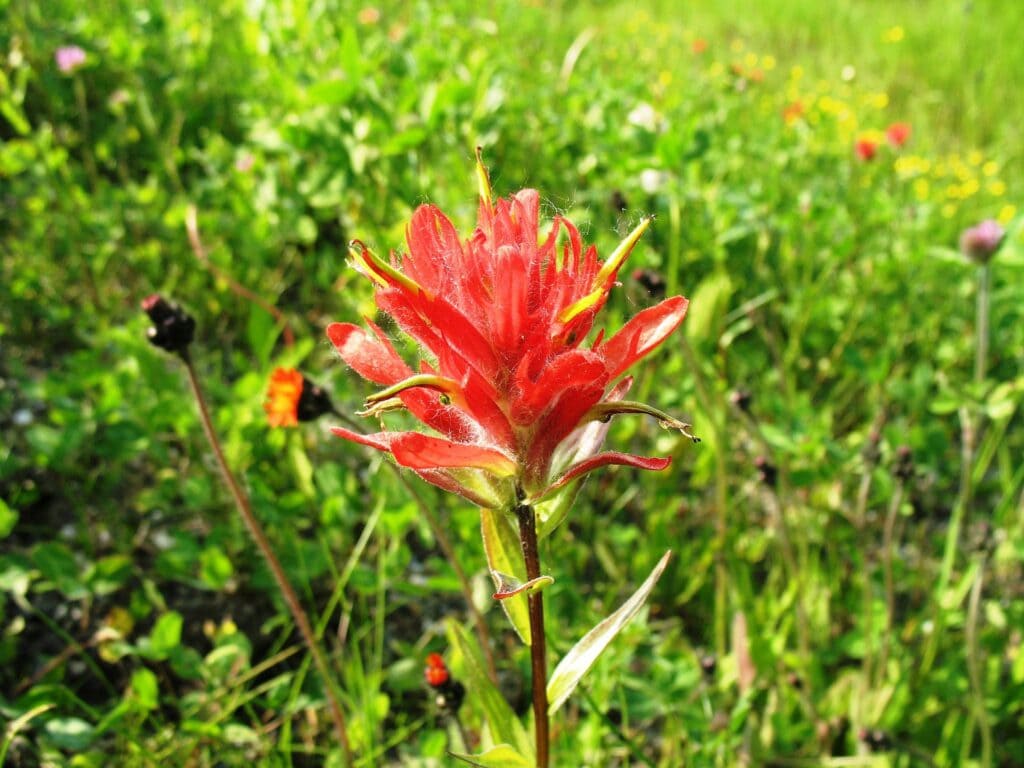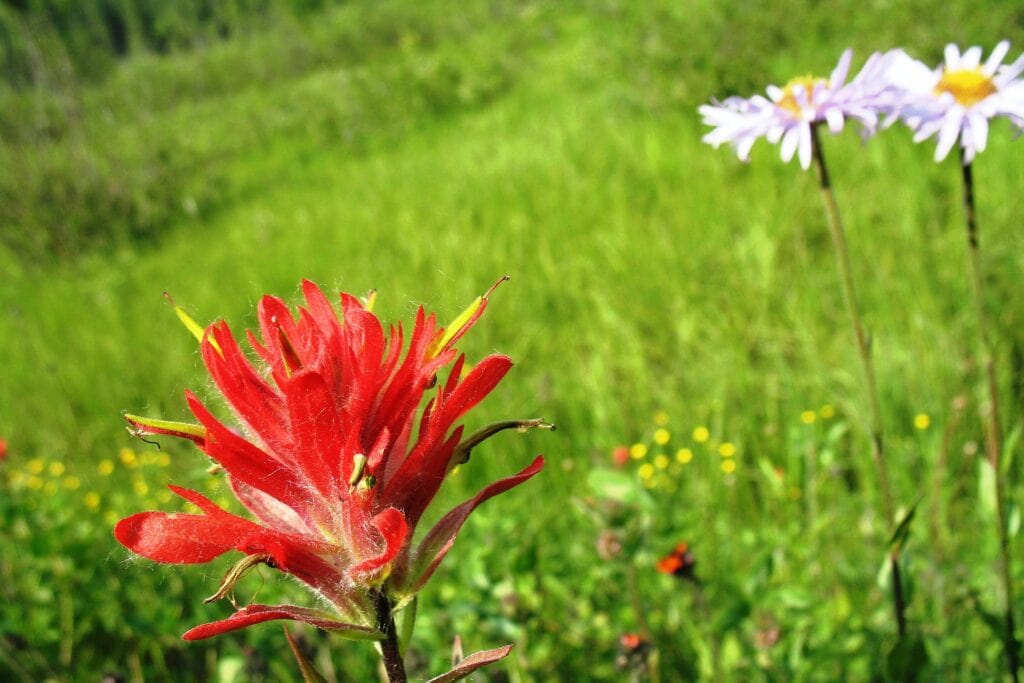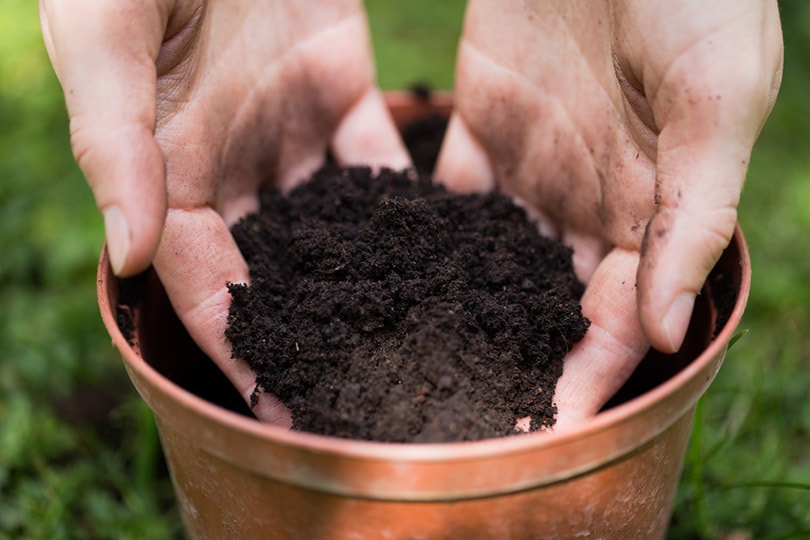What Is the State Flower of Wyoming? Facts & FAQ
-
Pete Ortiz
- Last updated:

Windy, dry, and covered in mountains and prairies, Wyoming is the 10th largest state. Approximately half of the land (national parks, recreational areas, and forests) is owned by the government. That makes it a perfect place for nature to grow and prosper. So, with the flora so rich and diverse, what is the state flower of Wyoming? It’s the Indian paintbrush, a native perennial plant.
Adopted back in 1917, it won over the hearts and minds of the locals with the mesmerizing red-tipped bracts. Widespread across the state, it’s used by Native-American tribes to treat diseases. It’s also edible and can be added to your favorite dishes for that extra oomph. Still, how was it picked as Wyoming’s state symbol? What made it stand out? Let’s find out!
What’s So Special About the Indian Paintbrush?

It takes a quick glance at this gorgeous flower to understand why it was picked as the state emblem of Wyoming. First, it has one of the brightest bracts in nature. They look like they were just painted red (hence the name). In fact, local tribes have been using the bracts for, well, painting (the red pigment is very strong and holds up well). Depending on the species, the flower can also be yellow, orange, white, or pink.
Other names for it include Grandmother’s Hair, Painted Lady, Painted Cup, and the Prairie Fire. Mostly, Castilleja linariifolia grows up in the mountains. Widespread across the fine state of Wyoming, the Indian paintbrush is a sight for sore eyes. While it can be toxic (we’ll talk about that in a moment), it’s highly resistant and has an extended blooming period.
This is an invasive species, by the way, with parasitic properties. When its roots come in contact with the roots of neighboring flowers, they literally pierce through them to feed on the nutrients gathered by that other plant. So, make sure to keep its population in check; otherwise, the paintbrush will take over your garden!
When Did It Become Wyoming’s State Flower?
The bill was signed more than 100 years ago (in 1917, to be exact). As was the case with other American states, the Indian paintbrush wasn’t the only candidate. The competition was quite tough. Dr. Aven Nelson, a prominent botanist/scientist at that time, was against it. He argued that the prairie fire wasn’t very common in Wyoming. On top of that, there were too many varieties to choose from.
But, eventually, the children of Wyoming chose it as the state’s symbol. And it was Dr. Grace Hebard that promoted this plant. She also single-handedly drafted a legislative initiative and attracted a sponsor that helped with the bill. It’s safe to say that the Indian paintbrush would’ve never gotten the “title” without the doctor’s endorsement.
Are State Flowers Common in America?

This might come as a surprise to a foreigner, but state flowers are pretty big in the US. Every single one of the 50 states has its own, unique flower. This tradition dates back to the early 20th century. That means these state symbols are roughly 100 years old. And, while it took some states extra time to develop an icon/symbol, once the decision was made, it was final.
So, who gets to decide which plant is to represent each state? The locals, of course! Technically, it’s the authorities that make it official, but they don’t get to pick: the citizens do that instead. The competition can be stiff, too, and the flower that receives the most votes wins. This is true for every single state, including Washington and Hawaii.
What About the Rest of the World?
The US is not the only country that puts flowers on a pedestal. The vast majority of countries around the globe also take pride in naming a native flower a national symbol. For example, the national flower of Egypt is the lotus; the same is true for India (but it’s red instead of white). Back in 1964, the plum blossom was picked as the state icon of China. And what about Japan, though? Does Sakura represent the Land of the Rising Sun?
Well, not quite. While it is, indeed, largely recognized as a symbol of Japan, it isn’t the national flower—the chrysanthemum is. Countries in Africa, the Middle East, South America, and, of course, Europe have their fair share of national flowers as well. Sometimes, one flower represents two nations—jasmine is the symbol of both Syria and Pakistan. But, for the most part, each nation has a unique floral emblem.
How Do You Grow the Indian Paintbrush in Your Yard?

If you’re fascinated by the prairie fire and want to grow it in your garden, we’re happy to say it’s very much possible. As long as you ensure full exposure to sunlight and plant the flower in well-drained soil, it will grow. It’s not a big fan of manicured gardens, though, and prefers prairies instead. Speaking of planting, you should only put the seeds in the soil when the temperature is at least 55 degrees F.
Also, do keep in mind that the Indian paintbrush isn’t a fast grower. Depending on the climate and how well you take care of it, the flower will take 3–4 months to make an appearance. So, be patient and don’t start adding tons of fertilizer or watering it non-stop when you don’t see any signs of growth in the first couple of weeks.
And one more thing: seeding is the way to go with the Indian paintbrush. If you plant it in a pot, it will be quite a challenge to transport it without damaging the roots.
Does It Have Any Health Benefits? Is It Toxic?
To this day, Native American tribes use this lovely flower as a paintbrush. On top of that, the Chippewa Indians treat it as a healing herb, most notably using it as a remedy against rheumatism and a means of decreasing the menstrual cycle. The Indian paintbrush is rich in selenium, which makes it a go-to hair rinse product (it is, indeed, quite effective as hair oil). The bright-red flowers are edible and won’t harm you.
Sadly, the same can’t be said about the greens or the roots. They are quite toxic and cause a number of side effects, especially when consumed in large portions. Make sure to consult with someone before you add the prairie fire to your salads and drinks! With that said, it’s quite a decent condiment that goes well with a long list of meals, adding a lovely flavor to “boring” meals.
When Was the Indian Paintbrush Officially Discovered?

The scientific name for the prairie fire is Castilleja and it can be both perennial and annual. Overall, there are over 200 species in this genus. They vary in shape, color, height, weather resistance, the blooming period, and more. You can find the Indian paintbrush in Asia, Alaska, and even the northwestern parts of Russia. The question still stands, though: when was it discovered and by whom?
All the credit goes to Carl Linnaeus, a renowned Swedish botanist who’s often referred to as the “Father of taxonomy as we know it”. He first described it in 1737. Initially, the flower was classified as a member of the Bartsia family. However, 81 years later (in 1818), it was placed in the Castilleja genus.
How Did Such a Flower Come Around?
According to an ancient legend, many centuries ago, a maiden from the Blackfoot tribe fell in love with a prisoner. Her people called her a traitor and she could never go back home. One day, she returned to her camp and drew a picture of it on a piece of bark with a stick using her own blood. That was the only way she could keep a piece of her native land close to her heart.
When the picture was done, the maiden threw the stick into the bushes. After she returned to her beloved, a flower grew from the stick and it was her blood that made its blossoms blindingly red. And that’s how the very first Indian paintbrush came to life. These days, the prairie fire covers most of the western Americas, including Chile.
Conclusion
Despite the modest population (~600K citizens), Wyoming is quite large and colorful: you’ll fall in love with the Equality State in the blink of an eye! The self-proclaimed Spirit of the West is home to some of the most exotic animals, birds, trees, bushes, and, of course, flowers. As for the Indian paintbrush, it represents everything Wyoming is about: serenity, inspiration, and self-love.
Native to the state, it symbolizes the natural beauty of the mountains, prairies, and breathtaking national parks. Now, while it does take effort, if you follow our short guide on growing Grandmother’s Hair, it shouldn’t be very hard to cultivate it. Take proper care of it, and you’ll be rewarded with a million-dollar view in your backyard!
- Gov – That’s WY. Travel Wyoming
- OhioHistoryCentral – Chippewa Indians
- StateSymbolsUSA – State Flowers
- USDA – Indian Paintbrush (Castilleja coccinea)
- Herbs, Plants, and Healing Properties
- NMState – Indian Paintbrush
- Care Of Indian Paintbrush Flowers
- New York Natural Heritage Program – Indian Paintbrush
- Wyoming State Flower – The Indian Paintbrush
- Facts, Legend & Lore About the Indian Paintbrush
- Grace Raymond Hebard: Shaping Wyoming’s Past
- Berkeley.Edu – Carl Linnaeus
- Britannica – the Blackfoot Tribe
- Federal land policy in Wyoming
Featured Image Credit: Pixabay
Contents


